HOW TO DELIMIT IN EXCEL
A delimiter separates each item of information in the string. Commas, spaces, tabs, and semicolons are commonly used as delimiters. In any case, splitting information into cells in Excel isn't always straightforward. Thus, we need explore how to use delimiters to coordinate data in an Excel worksheet.
Delimiting in Excel is a useful approach for breaking apart message strings or data values into different parts or parts using an existing delimiter character. Delimiters are characters like as commas, tabs, semicolons, spaces, and other symbols that are used to separate several bits of information within the same cell. Delimiting is frequently necessary when dealing with datasets organised in a certain format, such as CSV (comma-segregated values) or TSV (tab-separated values), in which each data point is isolated by a defined delimiter. Clients can easily modify material for distribution or provide more information.
How to Split Cells in Excel:
In this tutorial, you'll learn out how to divide cells in Excel using the following methods:
- Utilizing the Text to Columns feature.
- Utilizing Excel Text Capabilities.
- Utilizing Streak Fill (accessible in 2013 and 2016).
Split Cells in Excel Using Text to Column
I've listed the names of some top performers below, and I need to split them into separate cells.
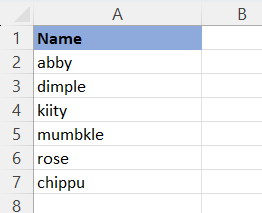
Below given are the steps to break these names into the first name and the last name:
- Select the cells with your chosen message (A2:A7).
- Click the Data tab.
- In the 'data tab' collection, choose 'Text to Columns'.

- The Convert Text to Columns will appear. In the Convert Text to Columns make sure Delimited is selected (that is the default). This allows you to separate the primary and continuing names using a predetermined separator (in this case, the space bar).
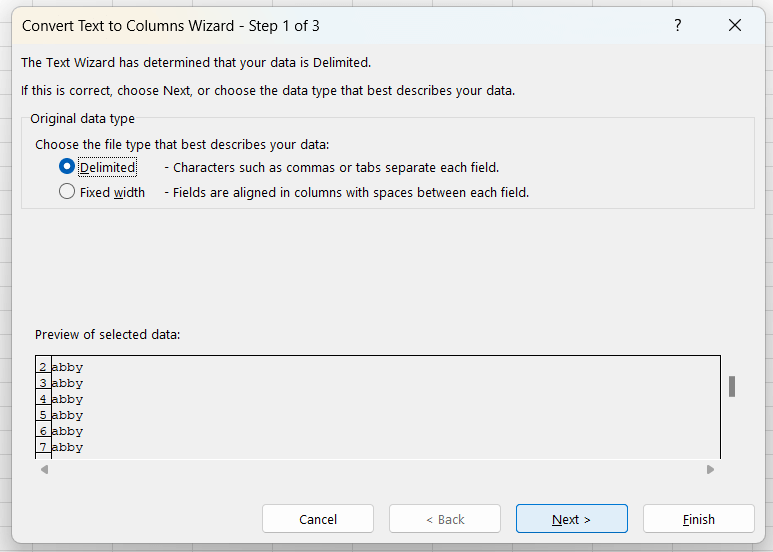
- Click on next.
- In step 2 of the wizard: Select Space as the delimiter and uncheck all other options. You may see how your outcome appears in the Information Review section of the conversation box.
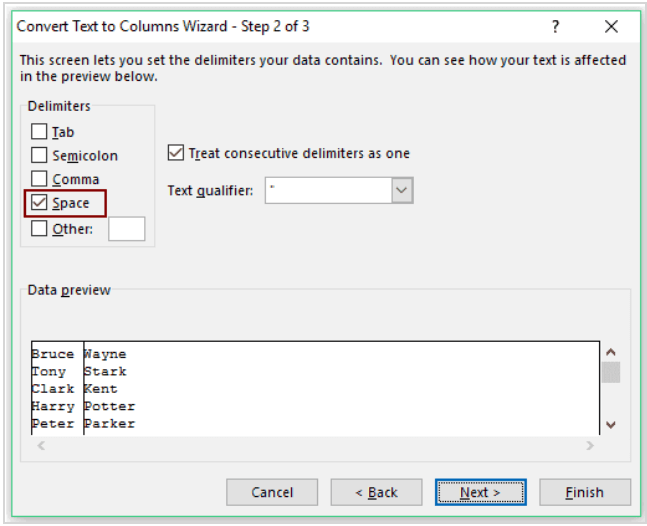
- Click on next.
- In Stage 3 of the wizard: In this phase, you may provide the data format and location where you want the result. By default, it will replace the original data in B2. If you want to keep the original data, select an additional cell as the destination. For this example, in our case B2 is selected.
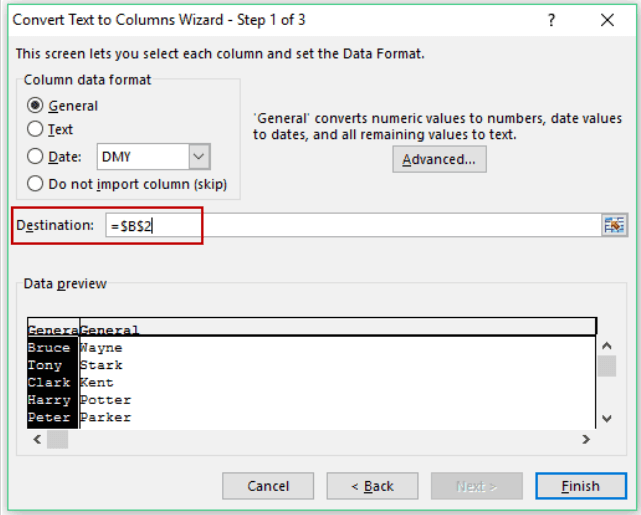
- Click Finish. This immediately divides the cell's message into two separate pieces.
Note: Messages may include sections of the cell's content depending on the delimiter used. While this works well to spilt the first name and the last name, it may not work correctly in case your name contains middle initials.
Split Cells in Excel using Text Functions
Excel text manipulation skills are exceptional when it comes to cutting up text strings. While the Text to Segments feature produces a static result, the result of using Text function is dynamic and will automatically refresh as you modify the information.
Extracting data using the LEFT, RIGHT, FIND, and LEN functions
- Using the first row (B3) of the example data, these functions may be used to divide a text string into portions using a delimiter character.
= FIND ( ",", B3 )
- You use the FIND function to determine the location of the first delimiter character. This will yield the number 18.
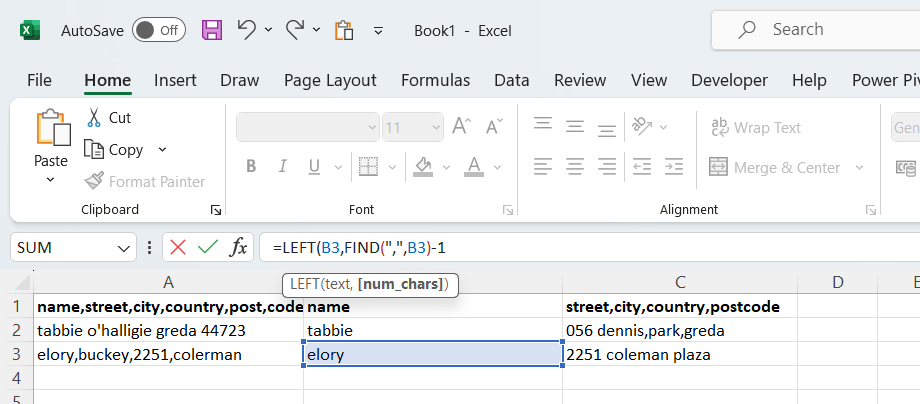
- You may then use the LEFT function to extract the first segment of the text string. As a result, it will return the text 'elory'
Note: The FIND function returns the position of the first delimiter, but you need to remove 1 from it so as to not include the delimiter character.
How to Split Text to Columns in Excel? (With Examples):
Example #1: Split the first and last name.
Suppose you are given a list of names that includes both first and last names in a single column.
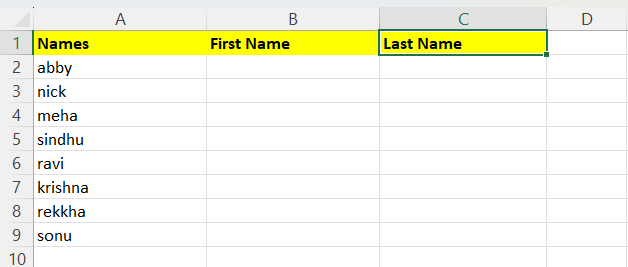
We wish to divide the first and last names into independent cells. The following are the steps for separating first and last names into separate cells.
- Select the text.

- Press "ALT + A + E." It will open the "Convert Text to columns Window."
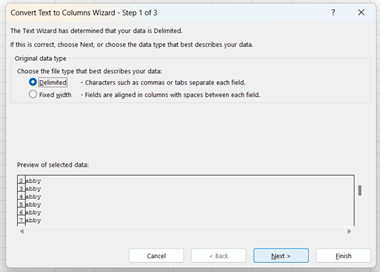
- Select "Delimited" and then click "Next."
- Select "SPACE" as the delimiter instead of "TAB" in the next step. If you have continuous gaps between the names, use the "Treat sequential delimiters as one" option. Finally, click on "Next."
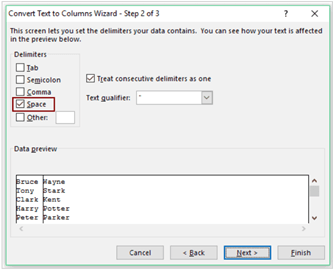
- Choose the destination cell. If you do not choose an objective cell, it will replace the current informative index with the principal name in the major columns and the last name in the adjacent section. If you want to retain the original data, select a different destination cell.
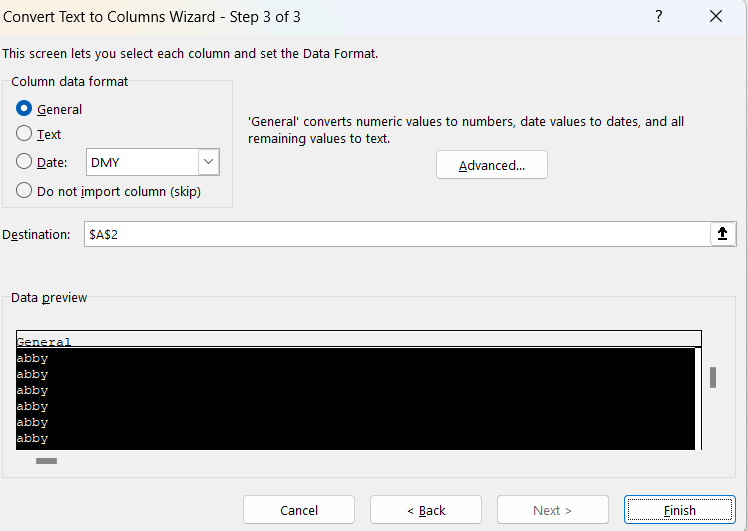
- Click "FINISH." This will separate the first name and last name individually. This technique is best suited for first and last names. If there are both first and last names, you should use a different strategy.
Examples 2: Convert Date to Text Using Text to Column Option.
If you don't need formulas to convert the date to message design, you may also use the Message TO Section Excel option. For example, suppose you have data from cells A2 through A8.
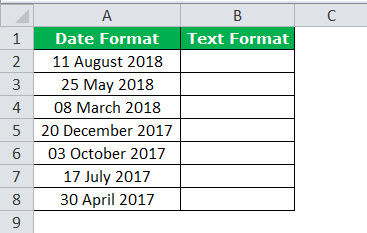
You now want to alter it to message design.
- Choose the entire data to containing the dates.
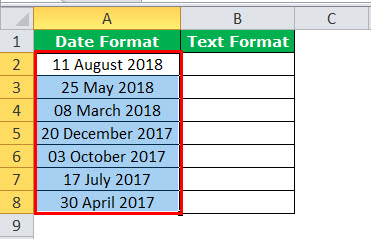
- Go to the Data tab and choose "Text to Columns" option.
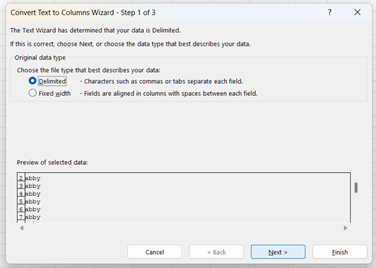
- Select "Delimited" and click on the "Next" option.
- The below window will open; uncheck all of the sections and press the "Next" button.
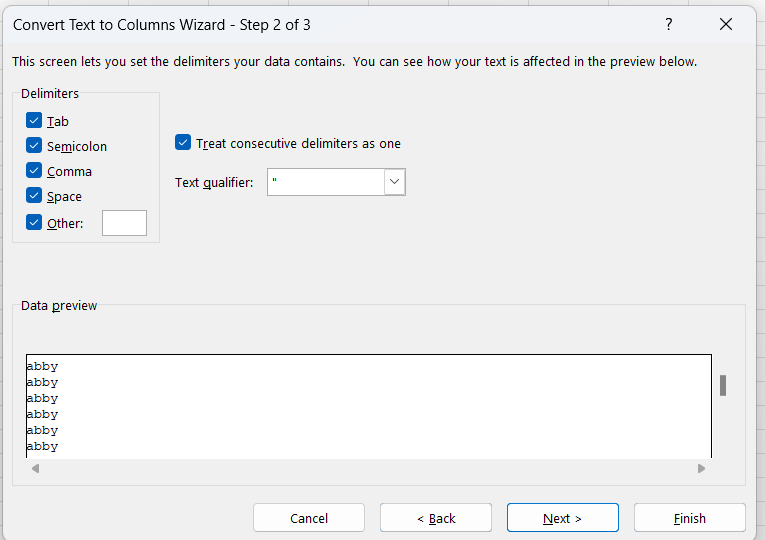
- Select the TEXT option from the exchange box. Note the objective cell as B2 and click "Finish."
- Your dates will now be converted to text format.
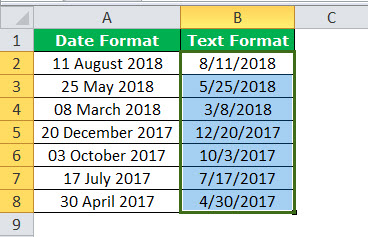
Convert a single column of data into many columns.
Let's suppose you are given a dataset that you further want to spilt into different columns using specified delimiter.
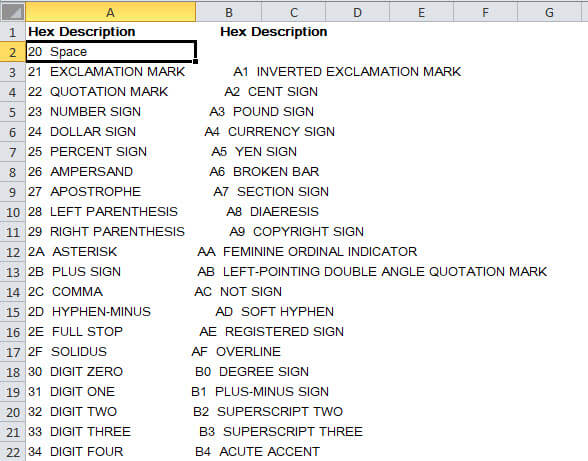
Based on the information provided above, we may conclude that there are four data points in a single cell: "Hex No., Depiction," "Hex No., Portrayal." In this case, we will use the "fixed-width" message with the approach.
- Stage 1: Choose the information range.
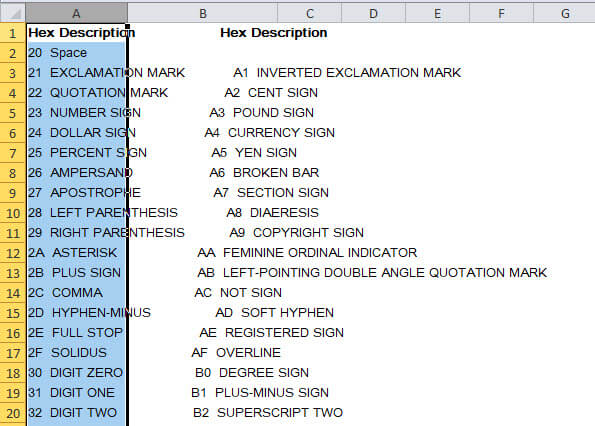
- Stage 2: Navigate to the "Data" tab and use the "Text to column" Excel option (ALT + A + E). It would bring up the "Convert Text to columns " window.
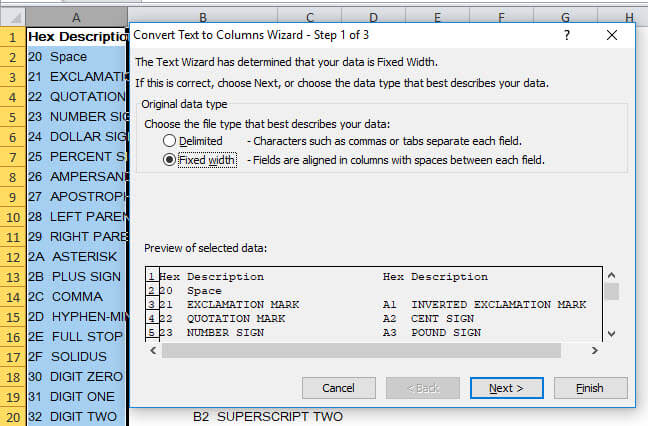
- Stage 3: Choose "Fixed width" and click "Next." Convert text to segments in Excel.
- In Stage 4, the "Information review" window has a fixed-width separator with vertical line markings (known as a break line). You may need to adjust it based on your information structure.
- In Stage 5, choose "Following" and pick B1 as the objective cell. It would embed the information in the new section to include our specific information.

- Stage 6: Now, click the "Finish" It would swiftly separate material into four sections: "Hex," "Portrayal," "Hex," and "Depiction," starting with column B and ending with column E.
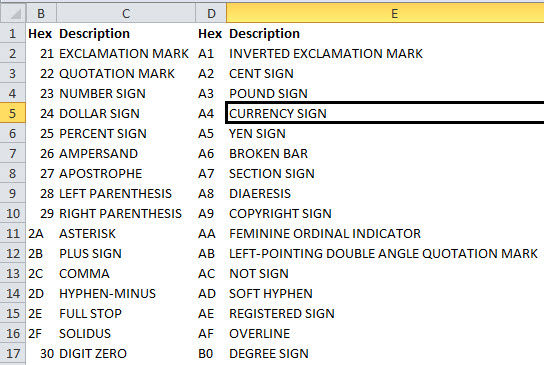
Flash Fill to Split Text
- Excel Flash fill feature can also be used to split text. For additional information, see the steps on how to split your data with flash fill.
- Then, choose the first cell where you want your data to divide and click Flash Fill. Excel will fill in the remaining rows from your example.

- Using the sample data, put Name into field C2, then Tabbie O'Hallagan into cell C3.
- Flash fill should instantly fill in the missing data names from the example data. If it doesn't, pick cell C4 and click the Flash Fill button in the Data Tools group on the Data tab of the Excel ribbon.
Conclusion:
To summarise, Excel's feature for delimiting cells divides text or data into several cells using preset delimiters. This method is incredibly useful for swiftly organising and arranging data, especially when dealing with datasets imported from other sources or including concatenated information.
- Text to Columns: The "Text to Columns" function allows users to divide text or data in a single column into many columns by utilising delimiters such as commas, spaces, tabs, and other characters. This tool is available via the "Data" tab.
- Formulas and Functions: Excel's formulae and functions, which include LEFT, RIGHT, MID, FIND, and SUBSTITUTE, provide additional options to programmatically delimit cells. Users can extract and parse data based on given delimiters by creatively combining these actions, resulting in increased flexibility and customisation.
|




 For Videos Join Our Youtube Channel: Join Now
For Videos Join Our Youtube Channel: Join Now


























